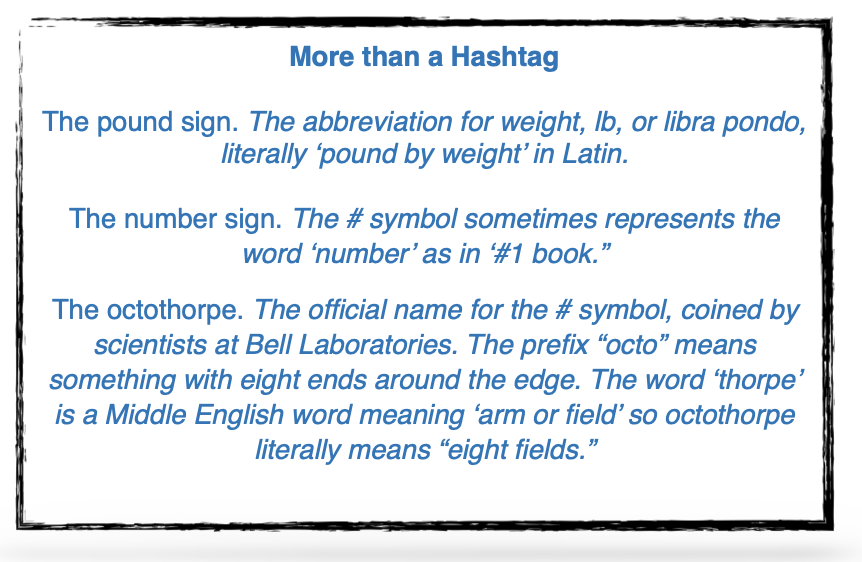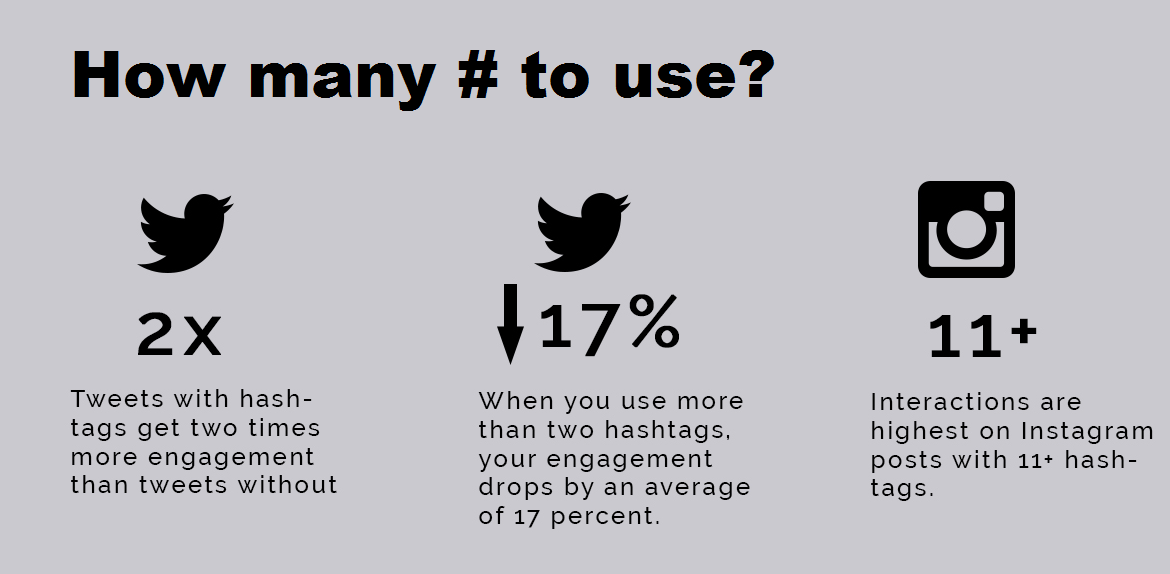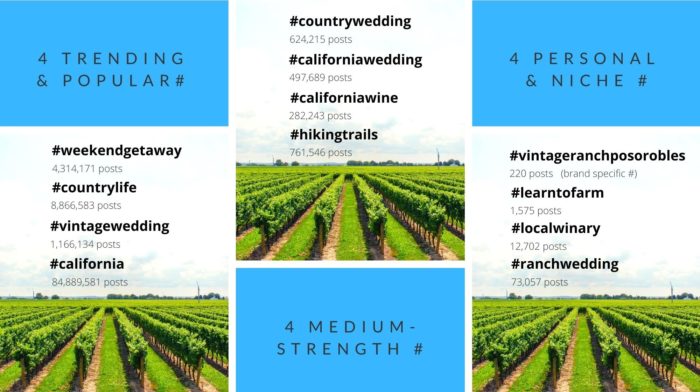

Pour la version française, cliquez ici.
There is a television show that features two marketing experts traveling around the United States, helping homeowners to profit from short-term rentals.
In one episode, the experts went to rural California. They met a middle-aged couple who had acres of vineyard and an old ranch house, which they wanted to rent to tourists. One of the marketing experts said, “When visitors are here in this magnificent countryside, they are going to take photos and post them on social media. As a result, the posts drive business to you through hashtags."
Then the expert asked, "Do you have a hashtag?”
Wife: “I…um… I think I have a hashtag?!”
The husband turned to her: “You don’t have a hashtag!” Oops!
Hashtags have become ubiquitous. But what exactly is a hashtag, and how can we use them to generate social media views?
A hashtag is a phrase or a word attached to the symbol #, and used across social media platforms including Twitter, Instagram, Facebook, and LinkedIn, to help people find more information about a particular subject.
A hashtag is a simple way to provide categories to different themes and ideas so that internet users can easily search for posts on these topics. For instance, when you are on Instagram and want to find some inspiration for your next vacation, you can type into the search bar #beautifuldestination. Instagram would then show you all the photos and videos containing this hashtag, giving you plenty of options for the vacation of a lifetime.
 Hashtag effectiveness
Hashtag effectivenessAs such, hashtags are the best way to connect you, your post, and your business to the target audience. By knowing what your audience are interested in, and what they are searching for on different platforms, you can tailor your hashtags accordingly.
On Instagram, a post with at least one hashtag averages 12.6 percent more engagement than a post without.
Here are some effortless hashtag rules to pay attention to:

The number of hashtags that you can add to your post varies depending on the platform. On Twitter, you can use all 140 allowed characters as hashtags but recommends using only two. Instagram allows for 30 hashtags. The key is the quality of your hashtag. So ask yourself the questions:
Not all of your hashtags should be top of the trending ones on Twitter or Instagram because they would be competing with all the other millions of posts containing the same hashtag. You can check the popularity of each hashtag on Instagram by simply putting it in the search bar.
There are also tools online to help you find the best hashtag, such as All Hashtag, Inflact and Sistrix.
Let’s say you decided on using 12 hashtags for your post. The rule of thumb is that you should choose four of the following:
Take for example the couple at the start of this article who want more bookings for their countryside ranch. A combination of hashtags might look like this:

Afterwards, you can analyse the performance of your hashtags using tools such as Instagram Insights, Sprout Social, and Iconosquare.
To improve your social media presence, the hashtag is not the only element you should pay attention to. Creating quality content, and beautiful images, and being consistent in posting content are also part of the success formula. Make sure to check out the latest trends on different social media platforms and adjust your content accordingly.
Now you have a good idea of what hashtags are and how they work, it's time to apply these tools to your social media posts. When you understand the rules of the game, the chance of winning is much higher. Just remember to be original, and most important of all, have fun!
Sources:
What Characters Can A Hashtag Include?
The Ultimate Guide to Instagram Hashtags in 2020
How to Use Hashtags on Instagram for Amazing Growth in 2020
Further Reading:
Image credit:
Huizhu Irrthum